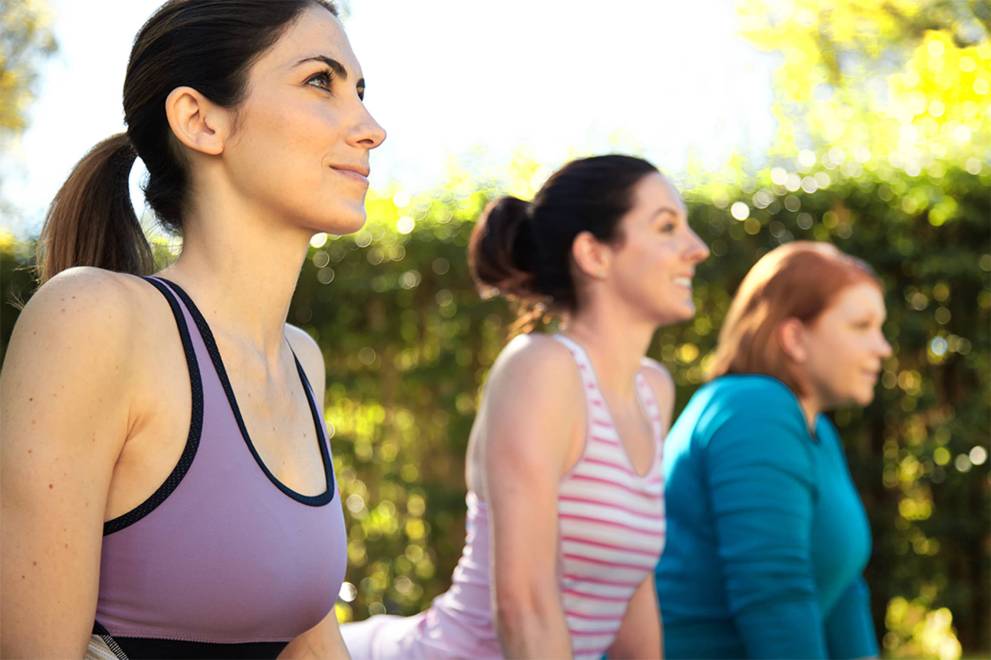

Melanoma on the Rise in Young Adults
Protect your skin this summer while having fun in the sun.
Summer in Southern California offers many opportunities to eat healthy and be active, whether enjoying a walk in the park, shopping at a farmers’ market, or taking free swim lessons provided through many cities’ Operation Splash programs.
Spending time outdoors has been shown to decrease stress, enhance mental clarity, and promote other health benefits. But exposure to harmful ultraviolet (UV) rays from the sun also can lead to skin cancer, particularly melanoma, the deadliest form. Although the risk of melanoma increases as people age, surprisingly, it has reached epidemic proportions among people under age 30, soaring by 50 percent since 1980, according to the Melanoma Research Foundation.
In fact, today melanoma:
- Rates as the second most commonly diagnosed cancer in people ages 15 to 29.
- Ranks as the leading cause of cancer death in women ages 25 to 30.
- Accounts for up to 3 percent of all pediatric cancers.
Major contributing factors for increasing melanoma rates in children, adolescents, and young adults are likely excessive tanning and the increased use of commercial tanning beds. Other causes also may be at play, such as more frequent and improved medical diagnostic testing, as well as a person’s genetics, according to Paola Rodriguez, MD, dermatologist, Southern California Permanente Medical Group.
The Best Defense
The greatest protection against most skin cancers, including melanoma, includes the following:
- Limit exposure to ultraviolet rays (UV), even on cloudy or hazy days, especially between the peak hours from 10 a.m. to 4 p.m.
- Shield skin with long-sleeved shirts, pants, and hats.
- Apply a broad-spectrum sunscreen with an SPF (sun-protection factor) of at least 30 every time when going outside. Reapply frequently.
- Wear UV-blocking sunglasses.
- Do monthly skin self-exams using the ABCDE method (see below).
- Get any suspicious moles or spots on the skin checked by a doctor as early as possible.
Examine moles or suspicious spots on the skin using the ABCDEs of melanoma:
- Asymmetry
- Border irregularity
- Color variation
- Diameter
- Evolving (changes to a mole's size or coloring).
Source: American Cancer Society
Genetics, for example, is one reason why young people can acquire melanoma earlier in life, including on areas of the body not usually exposed to the sun, like the palms of the hands, soles of the feet, or under the nails. Caucasians are most at risk for melanoma, especially those with fair skin and light hair or eyes; have had a blistering sunburn before age 18; and/or have a family history of skin cancer.
“People with darker skin tones, such as African-Americans, Hispanics, and Asians, may think they’re not as susceptible to skin cancer because they don’t burn as easily, and therefore, may be less likely to use sunscreen,” said Dr. Rodriguez, who practices at Kaiser Permanente South Bay Medical Center. “As a result, people of color are more prone to be diagnosed with melanoma in its later stages after the disease is more advanced.”
Despite increased awareness about the harmful impact of tanning, many young people perceive the bronzed look gives them a “healthy glow.” A significant number – mostly young females – turn to indoor tanning salons. While sunlight can damage the skin, intense, artificial UV rays in indoor tanning booths can be especially dangerous.
According to the American Academy of Dermatology:
- Using indoor tanning beds before age 35 can increase the risk of melanoma by 75 percent.
- Nearly 70 percent of tanning salon patrons are Caucasian girls and young women. (Various states, including California, now prohibit the use of indoor tanning beds for youth under age 18.)
- Approximately 15 percent of Caucasian women ages 18 to 30 engage in frequent indoor tanning.
Although using sunless tanner sprays and lotions to get the desired effect is healthier than an indoor tanning bed or catching some rays, Dr. Rodriguez has another suggestion: “For all of us to love and be happy with the skin we’re in.”
For more information and tips on skin cancer prevention, diagnosis, and treatment, visit the American Cancer Society or American Academy of Dermatology.
Kaiser Permanente Southern California’s community health funding supports various partner organizations to provide popular programs such as Operation Splash, Rethink Your Drink, and HEAL (Healthy Eating Active Living) zones, as well as to increase access to green spaces and farmers’ markets.
To learn more about Kaiser Permanente’s work in the community, visit https://community.kp.org